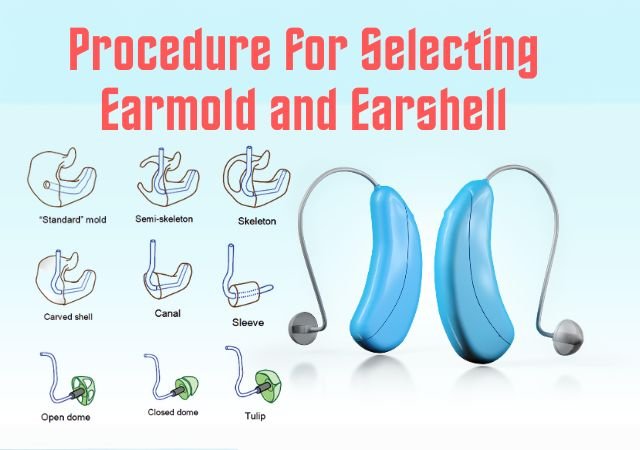Audiology Assistant Certification Exam Practice Test Question Free: The Audiology Assistant plays a vital role in supporting the audiologist by carrying out tasks that are planned, delegated, and supervised by the audiologist. This includes providing exceptional patient care, performing maintenance on hearing devices, and enhancing the productivity of the audiology practice to improve patient experiences and services, all in compliance with local, state, and federal regulations. The Audiology Assistant Certification Exam by ASHA assesses an applicant’s knowledge, skills, and abilities in these areas. To prepare, candidates can use resources like the Audiology Assistant Certification Exam Practice Test Question Free, review Audiology Assistant Interview Questions, and consult the Audiology Assistant Study Guide.

ASHA Audiology Assistant Exam Study Guide
The blog article is divided into 3 sections, each focusing on a different aspect of audiology practice. At the end of each section description, you will find a link to the corresponding practice test questions. By systematically working through each section and utilizing the practice questions, you’ll be well-prepared for the Audiology Assistant Certification Exam. Good luck!
Audiology Assistant Certification
Audiology Assistant Certification Exam – Dates | Syllabus | Prep
The syllabus for the Audiology Assistant Exam Blueprint [PDF] includes:
- Providing Patient Care by Audiology Assistant (40%)
- Performing Hearing Device Maintenance by Audiology Assistant (20%)
- Maintaining the Audiology Clinic by Audiology Assistant (40%)
Audiology Assistant Certification Exam Practice Test Question Free
Welcome to the multiple-choice questions for the Audiology Assistant Certification Exam. These questions are designed to help you prepare for the exam by testing your understanding of the role and responsibilities of an audiology assistant. As an audiology assistant, you will support audiologists by performing tasks that are planned, delegated, and supervised by them. Your duties include providing excellent patient care, maintaining hearing devices, and improving the overall efficiency of the audiology practice, all while adhering to local, state, and federal regulations. These questions will cover the key knowledge, skills, and abilities required for the certification exam.
Instructions:
- Read Each Question Carefully: Take your time to understand the question and all the answer choices before selecting your answer.
- Select the Best Answer: Choose the answer that best completes the statement or answers the question based on the knowledge covered in the introduction.
- Review Your Answers: After completing all the questions, review your answers to ensure they reflect your best understanding of the material.
- Use This as a Learning Tool: These questions are designed to reinforce your knowledge and identify areas where further study may be needed.
Good luck, and remember that practice is key to your success on the ASHA Audiology Assistant Exam!
Providing Patient Care by Audiology Assistant (50 Questions)
1. What does HIPAA primarily focus on in a healthcare setting?
a) Patient comfort
b) Patient safety
c) Patient privacy and confidentiality
d) Medical accuracy
2. When transporting a patient, what is the primary safety concern?
a) Speed
b) Comfort
c) Privacy
d) Preventing falls
3. What should be included when providing educational materials to patients about hearing loss?
a) Treatment options for hearing loss
b) Benefits of exercise
c) Financial assistance programs
d) Legal rights in healthcare
4. Who should assist patients in completing case history forms if they are unable to do it themselves?
a) The receptionist
b) The Audiology Assistant
c) The patient’s family member
d) The hospital administrator
5. What is the role of an Audiology Assistant in ensuring culturally appropriate services?
a) Provide direct diagnosis
b) Identify the need for translation/interpretation services
c) Administer therapy sessions
d) Prescribe medication
6. Which of the following tasks is an Audiology Assistant not allowed to perform independently?
a) Conduct non-diagnostic otoscopy
b) Provide interpretation of diagnostic results
c) Assist with equipment preparation
d) Conduct hearing screenings without interpretation
7. What should you inform a patient about before performing an otoscopy?
a) The types of hearing aids available
b) The otoscopy procedure itself
c) The cost of the procedure
d) The time it will take for diagnosis
8. When performing an otoscopy, what landmark should be identified?
a) Ear canal shape
b) Tympanic membrane
c) Cochlea
d) Eustachian tube
9. According to ASHA guidelines, an Audiology Assistant can conduct which of the following screenings without interpretation?
a) Audiological diagnosis
b) Immittance screening
c) Neurological assessment
d) Speech therapy sessions
10. What does VRA stand for in pediatric behavioral hearing testing?
a) Visual Receptive Assessment
b) Visual Reinforcement Audiometry
c) Variable Response Analysis
d) Vestibular Reaction Assessment
11. In preparation for vestibular testing, what is a crucial step?
a) Booking the testing room
b) Ensuring patient health information is up to date
c) Administering medication
d) Scheduling follow-up appointments
12. What materials should be provided to patients before evoked potential testing?
a) Brochures on ear anatomy
b) Educational materials on evoked potential testing
c) Information on hearing aid care
d) Surgery preparation guides
13. Who is responsible for preparing equipment for evoked potential testing?
a) The Audiologist
b) The Audiology Assistant
c) The patient
d) The medical billing specialist
14. Which task would an Audiology Assistant perform regarding hearing devices?
a) Design the hearing devices
b) Deliver hearing devices, accessories, and supplies
c) Develop new hearing aid technology
d) Diagnose hearing disorders
15. When instructing patients on hearing devices, what should be emphasized?
a) Device cost
b) Proper use and care
c) Warranty details
d) Battery life
16. What type of devices might an Audiology Assistant demonstrate to patients?
a) Cochlear implants
b) Alerting and assistive listening devices
c) Diagnostic imaging equipment
d) Physical therapy tools
17. In tinnitus management, the Audiology Assistant is most likely to assist with:
a) Surgical procedures
b) Medication prescriptions
c) Intervention programs
d) Diagnostic imaging
18. Documentation in a medical record by an Audiology Assistant should include:
a) Personal opinions about the patient
b) Patient/caregiver encounters
c) Financial transactions
d) Insurance details
19. Which screening is specifically conducted for newborns?
a) Immittance screening
b) Newborn hearing screening
c) Visual Reinforcement Audiometry (VRA)
d) Otoacoustic emission screening
20. What does an Audiology Assistant need to do before conducting an immittance screening?
a) Analyze results
b) Explain the procedure to the patient
c) Prescribe hearing aids
d) Perform ear surgery
21. What is the role of an Audiology Assistant during pediatric behavioral hearing testing?
a) Lead the test independently
b) Act as a test assistant
c) Interpret test results
d) Prescribe treatment
22. When preparing a patient for evoked potential testing, what should be explained?
a) The benefits of hearing aids
b) The evoked potential testing process
c) The cost of the testing equipment
d) The risks of anesthesia
23. Which type of hearing screening does not require interpretation by an Audiology Assistant?
a) Behavioral audiometry
b) Otoacoustic emission screening
c) Cognitive hearing assessment
d) Speech recognition threshold testing
24. Why might an Audiologist need linguistically appropriate translation services?
a) To prescribe medications
b) To ensure accurate communication with non-English speaking patients
c) To perform surgery
d) To conduct physical therapy sessions
25. What is the Audiology Assistant’s role in utilizing interpretation services?
a) Perform interpretations themselves
b) Assist in the use of these services
c) Ignore language barriers
d) Prescribe medications based on interpretations
26. During a non-diagnostic otoscopy, the Audiology Assistant should:
a) Provide a full diagnostic report
b) Identify normal anatomical landmarks
c) Perform surgery if needed
d) Prescribe hearing aids
27. In newborn hearing screening, what is the Audiology Assistant’s responsibility?
a) Interpreting results
b) Conducting the screening without interpretation
c) Prescribing medication
d) Recommending surgical intervention
28. What must be done before assisting with hearing devices?
a) Diagnose hearing loss
b) Instruct on proper use and care of the devices
c) Perform ear surgery
d) Conduct a neurological exam
29. What is the key reason for conducting a hearing screening?
a) To sell hearing aids
b) To diagnose hearing conditions
c) To detect potential hearing loss early
d) To train new staff
30. How should an Audiology Assistant prepare equipment for vestibular testing?
a) Sterilize the equipment
b) Ensure the equipment is functional and ready
c) Prepare the patient mentally
d) Diagnose balance disorders
31. When should an Audiology Assistant provide educational materials?
a) During surgery
b) After diagnosis
c) Before any procedure related to hearing or balance
d) When selling hearing aids
32. What kind of screening involves the measurement of the ear’s ability to produce sounds?
a) Immittance screening
b) Otoacoustic emission screening
c) Visual Reinforcement Audiometry
d) Cognitive hearing assessment
33. An Audiology Assistant is expected to help with:
a) Performing ear surgeries
b) Tinnitus management programs
c) Prescribing medication
d) Diagnosing hearing loss
34. Which aspect is not a part of the Audiology Assistant’s role in patient care?
a) Assisting with intervention programs
b) Diagnosing auditory processing disorders
c) Preparing equipment for testing
d) Documenting patient encounters
35. When performing hearing screenings, the Audiology Assistant should:
a) Interpret the results
b) Conduct the screening according to ASHA guidelines
c) Prescribe treatment based on the screening
d) Refer patients to surgery
36. The Audiology Assistant’s involvement in aural rehabilitation may include:
a) Conducting surgeries
b) Assisting with therapy sessions
c) Diagnosing hearing disorders
d) Interpreting test results
37. What is the purpose of using alerting and assistive listening devices?
a) To diagnose hearing conditions
b) To assist patients with hearing loss in daily activities
c) To perform surgical interventions
d) To improve ear structure
38. Which of the following is a culturally appropriate action for an Audiology Assistant?
a) Ignoring language differences
b) Providing materials in the patient’s preferred language
c) Offering medical advice beyond training
d) Administering medication
39. What must be documented after a patient encounter?
a) Personal opinions
b) Patient/caregiver interactions and observations
c) Insurance policies
d) Financial transactions
40. When is it appropriate for an Audiology Assistant to interpret test results?
a) Always
b) When requested by the patient
c) Never, interpretation should be done by an Audiologist
d) Only during emergency situations
41. What is one of the key tasks of an Audiology Assistant related to newborns?
a) Conducting speech therapy
b) Conducting newborn hearing screenings
c) Diagnosing genetic hearing loss
d) Performing surgery
42. How does an Audiology Assistant contribute to hearing conservation programs?
a) By conducting surgeries
b) By administering medications
c) By assisting with educational initiatives and protective measures
d) By interpreting diagnostic tests
43. In aural rehabilitation, the Audiology Assistant might assist with:
a) Cognitive testing
b) Therapy sessions focused on listening and communication skills
c) Blood tests
d) Genetic counseling
44. When preparing for evoked potential testing, what should the Audiology Assistant ensure?
a) The room is dark
b) The equipment is properly set up and calibrated
c) The patient has taken medication
d) The test is completed quickly
45. What should be done if a patient needs translation services?
a) Use Google Translate
b) Contact a qualified interpreter
c) Ask a family member to interpret
d) Continue without translation
46. What is one of the first steps in assisting an Audiologist with delivery of hearing devices?
a) Demonstrating how to use the device
b) Diagnosing the need for the device
c) Selling the device
d) Repairing the device
47. What guideline should be followed for conducting immittance screening?
a) Hospital policy
b) ASHA guidelines
c) Patient preference
d) Manufacturer instructions
48. The Audiology Assistant’s role in documenting medical records includes:
a) Noting only the date and time
b) Recording patient/caregiver encounters and relevant clinical information
c) Filing insurance claims
d) Making diagnoses
49. When might an Audiology Assistant need to demonstrate assistive listening devices?
a) During a surgical procedure
b) When a patient is experiencing hearing difficulties in specific situations
c) After ear cleaning
d) When fitting earplugs
50. Which type of screening would an Audiology Assistant conduct without interpreting the results?
a) Cognitive assessments
b) Behavioral audiometry
c) Newborn hearing screening
d) MRI scans
Answer Key
- c
- d
- a
- b
- b
- b
- b
- b
- b
- b
- b
- b
- b
- b
- b
- b
- c
- b
- b
- b
- b
- b
- b
- b
- b
- b
- b
- b
- c
- b
- c
- b
- b
- b
- b
- b
- b
- b
- b
- c
- b
- c
- b
- b
- b
- a
- b
- b
- b
- c
Performing Hearing Device Maintenance by Audiology Assistant (50 Questions)
What is the first step in checking a hearing device?
- a) Listening check
- b) Visual inspection
- c) Electroacoustic analysis
- d) Battery check
Which of the following is NOT a common issue found during a visual inspection?
- a) Corrosion
- b) Earwax buildup
- c) Low battery
- d) Broken tubing
What should you do if the hearing aid produces no sound during the listening check?
- a) Check the volume setting
- b) Replace the battery
- c) Clean the microphone port
- d) All of the above
When inspecting hearing aid tubing, what should you look for?
- a) Color changes
- b) Flexibility
- c) Cracks or tears
- d) All of the above
How often should a hearing device be checked for proper functioning?
- a) Daily
- b) Weekly
- c) Monthly
- d) Annually
What is the first step in troubleshooting a hearing aid that is not working?
- a) Replace the battery
- b) Clean the device
- c) Check the battery orientation
- d) Adjust the volume
If a hearing aid is whistling, what is a common cause?
- a) Low battery
- b) Earwax blockage
- c) Improper fit
- d) Damaged microphone
How can you fix a hearing aid that is producing distorted sound?
- a) Clean the microphone
- b) Replace the battery
- c) Check for moisture
- d) All of the above
Which part of the hearing aid is most commonly replaced during minor repairs?
- a) Microphone
- b) Tubing
- c) Speaker
- d) Battery door
What should you do if the hearing aid volume is too low, even at the highest setting?
- a) Check for earwax buildup
- b) Replace the tubing
- c) Increase the gain setting
- d) Clean the earmold
When should a hearing device be sent to the manufacturer for repair?
- a) After minor troubleshooting fails
- b) Immediately upon malfunction
- c) Only for warranty issues
- d) When it is physically damaged
Which of the following should be included when sending a hearing device for repair?
- a) Original packaging
- b) Detailed description of the issue
- c) Warranty card
- d) All of the above
What information is essential when documenting a hearing aid repair request?
- a) Device model and serial number
- b) User’s hearing loss level
- c) Date of purchase
- d) Cleaning history
Before sending a hearing aid for repair, what should be done?
- a) Perform a final check
- b) Remove the battery
- c) Clean the device
- d) All of the above
What is the typical turnaround time for hearing aid repairs by manufacturers?
- a) 1-2 days
- b) 3-5 days
- c) 1-2 weeks
- d) 1 month
What is a common cause of feedback in an earmold?
- a) Moisture buildup
- b) Earwax blockage
- c) Poor fit
- d) Damaged tubing
How can you address an earmold that is causing discomfort?
- a) Replace the tubing
- b) Adjust the fit
- c) Modify the shape slightly
- d) Increase the volume
Which tool is commonly used for minor earmold modifications?
- a) Scissors
- b) Heat gun
- c) Drill
- d) Knife
What should be done if the tubing of an earmold becomes discolored?
- a) Replace the tubing
- b) Clean the tubing
- c) Shorten the tubing
- d) None of the above
If an earmold is too tight, what is a possible solution?
- a) Trim the earmold slightly
- b) Replace the earmold
- c) Use a lubricant
- d) Increase the gain
What is the primary reason for modifying an earmold?
- a) Improve comfort
- b) Adjust sound quality
- c) Reduce feedback
- d) All of the above
How do you modify an earmold to reduce feedback?
- a) Enlarge the vent
- b) Lengthen the canal portion
- c) Add more material
- d) Shorten the tubing
What should you do before making any modifications to an earmold?
- a) Check with the manufacturer
- b) Get approval from the audiologist
- c) Clean the earmold
- d) Perform a listening check
How can you make an earmold more comfortable for the user?
- a) Sand down rough edges
- b) Increase the size of the vent
- c) Replace the tubing
- d) Increase the gain
What is a potential risk of modifying an earmold without proper training?
- a) Voiding the warranty
- b) Causing feedback
- c) Reducing sound quality
- d) All of the above
How often should hearing devices be cleaned?
- a) Daily
- b) Weekly
- c) Monthly
- d) As needed
What is the safest way to clean a hearing aid?
- a) Use a damp cloth
- b) Use a dry cloth
- c) Use alcohol wipes
- d) Submerge in water
Which part of the hearing aid should be cleaned with a small brush?
- a) Microphone port
- b) Battery compartment
- c) Tubing
- d) Earmold
What should you use to clean an earmold?
- a) Soap and water
- b) Alcohol wipes
- c) Soft cloth
- d) All of the above
Why is it important to clean hearing devices regularly?
- a) To ensure proper functioning
- b) To prevent ear infections
- c) To prolong the device’s lifespan
- d) All of the above
What does electroacoustic analysis measure in a hearing aid?
- a) Sound output
- b) Battery life
- c) Physical damage
- d) User comfort
When should an electroacoustic analysis be performed?
- a) During initial fitting
- b) After repairs
- c) During routine maintenance
- d) All of the above
Which of the following is NOT typically measured during an electroacoustic analysis?
- a) Frequency response
- b) Harmonic distortion
- c) Battery voltage
- d) Gain
What is the purpose of performing an electroacoustic analysis?
- a) To ensure the hearing aid is functioning properly
- b) To diagnose physical damage
- c) To adjust the fit
- d) To clean the device
Which equipment is commonly used to perform electroacoustic analysis?
- a) Audiometer
- b) Real ear measurement system
- c) Hearing aid analyzer
- d) Otoscope
What is the first step in confirming the accuracy of hearing device settings?
- a) Listening check
- b) Visual inspection
- c) Electroacoustic analysis
- d) User feedback
After a repair, why is it important to confirm the hearing device settings?
- a) To ensure correct sound output
- b) To check for physical damage
- c) To clean the device
- d) To document the repair
What should you do if the hearing device settings are not accurate after repair?
- a) Reprogram the device
- b) Send it back to the manufacturer
- c) Adjust the volume
- d) Replace the battery
Which tool is used to verify the hearing aid’s settings?
- a) Otoscope
- b) Hearing aid analyzer
- c) Real ear measurement system
- d) Tuning fork
What is the role of user feedback in confirming the accuracy of hearing device settings?
- a) It provides insight into sound quality
- b) It helps detect physical issues
- c) It determines the need for cleaning
- d) It is irrelevant to the process
Which of the following is a sign that a hearing aid may need repair?
- a) Intermittent sound
- b) Excessive feedback
- c) Physical damage
- d) All of the above
How can you check if a hearing aid battery is still good?
- a) Use a battery tester
- b) Listen for sound
- c) Shake the battery
- d) Replace it with a new one
Why is it important to perform routine maintenance on hearing aids?
- a) To prevent major repairs
- b) To extend the device’s life
- c) To ensure user satisfaction
- d) All of the above
What is the main purpose of an earmold?
- a) To improve sound quality
- b) To provide a comfortable fit
- c) To hold the hearing aid in place
- d) All of the above
How should hearing aids be stored when not in use?
- a) In a dry, cool place
- b) In a humid environment
- c) In the original packaging
- d) Near electronic devices
What is the most common cause of hearing aid failure?
- a) Battery issues
- b) Physical damage
- c) Moisture buildup
- d) Earwax blockage
How can you prevent moisture damage to a hearing aid?
- a) Use a dehumidifier
- b) Store in a dry box
- c) Avoid wearing it in the rain
- d) All of the above
What is a common symptom of a clogged earmold?
- a) Reduced sound output
- b) Excessive feedback
- c) Discomfort
- d) All of the above
Which tool is used to check for earwax buildup in a hearing aid?
- a) Otoscope
- b) Brush
- c) Air blower
- d) None of the above
How can you ensure a hearing aid is functioning properly after maintenance?
- a) Perform a listening check
- b) Conduct an electroacoustic analysis
- c) Confirm with user feedback
- d) All of the above
Answer Key:
- b
- c
- d
- d
- b
- c
- c
- d
- b
- a
- a
- d
- a
- d
- c
- c
- b
- b
- a
- a
- d
- b
- b
- a
- d
- a
- b
- a
- a
- d
- a
- d
- c
- a
- c
- c
- a
- a
- b
- a
- d
- a
- d
- d
- a
- c
- d
- d
- a
- d
Maintaining the Audiology Clinic by an Audiology Assistant (50 Questions)
What is the first step in scheduling patients for audiology services?
- a) Triage patient needs
- b) Create scheduling templates
- c) Confirm patient appointments
- d) Schedule patient based on needs and availability
What should be considered when creating scheduling templates?
- a) Patient preferences
- b) Audiologist’s availability
- c) Types of services offered
- d) All of the above
Which action is necessary to ensure a smooth patient appointment process?
- a) Triage patient needs
- b) Confirm patient appointments
- c) Schedule patient based on availability
- d) Input data into hearing device software
When inputting patient data into hearing device software, it is important to:
- a) Check for previous patient history
- b) Use default software settings
- c) Ensure data accuracy
- d) Input data quickly
What should be done regularly to maintain the patient database?
- a) Schedule follow-up appointments
- b) Input newborn hearing screening data
- c) Update patient information
- d) Perform diagnostic equipment checks
Why is it important to input newborn hearing screening data into regulatory databases?
- a) To track hearing aid sales
- b) To comply with legal requirements
- c) To ensure accurate patient billing
- d) To confirm patient appointments
What should be identified to maintain inventories of supplies?
- a) Expired stock
- b) Preferred suppliers
- c) New patient needs
- d) Diagnostic equipment issues
How should stock be managed to ensure supplies are always available?
- a) Order supplies monthly
- b) Rotate stock based on expiration dates
- c) Check stock daily
- d) Order supplies in large quantities
What is the correct procedure when ordering needed supplies?
- a) Estimate future needs
- b) Restock rooms before placing orders
- c) Order only when stock is out
- d) Identify needed supplies first
Why is it necessary to restock test and treatment rooms?
- a) To avoid patient complaints
- b) To ensure smooth clinic operations
- c) To impress patients
- d) To meet supplier requirements
What is a key step in preparing diagnostic equipment for use?
- a) Clean the equipment thoroughly
- b) Perform diagnostic equipment checks
- c) Input patient data into the equipment
- d) Consult with audiologists
What should be done if diagnostic equipment fails during a check?
- a) Perform troubleshooting
- b) Schedule an immediate patient appointment
- c) Order new equipment
- d) Ignore the issue
Who should be contacted if diagnostic equipment requires maintenance?
- a) Patients
- b) In-house personnel or vendors
- c) Supply managers
- d) Regulatory agencies
What materials should be prepared based on the appointment type?
- a) Earmolds
- b) Cerumen removal tools
- c) Hearing device fittings
- d) All of the above
When should infection control duties be performed in the clinic?
- a) Weekly
- b) Monthly
- c) After every patient visit
- d) As needed
Why is communication with hearing device manufacturers important?
- a) To update patient records
- b) To manage order status and troubleshooting
- c) To reduce clinic costs
- d) To confirm patient appointments
What is the proper procedure when ordering hearing devices?
- a) Confirm the order with the patient first
- b) Contact multiple suppliers
- c) Communicate directly with manufacturers
- d) Order only from preferred vendors
Which of the following should be done to maintain patient data accuracy?
- a) Review data entries regularly
- b) Input data only during appointments
- c) Use shortcuts to save time
- d) Share data with manufacturers
What is the purpose of performing biological checks on diagnostic equipment?
- a) To test for biological contamination
- b) To ensure equipment accuracy and safety
- c) To clean the equipment
- d) To calibrate the equipment
What should be done if a patient appointment needs to be rescheduled?
- a) Ignore the original appointment
- b) Triage the patient’s needs again
- c) Reschedule based on availability
- d) Cancel the appointment
Why is it important to rotate stock based on expiration dates?
- a) To comply with manufacturer recommendations
- b) To prevent using expired supplies
- c) To reduce supply costs
- d) To ensure timely reordering
When preparing for ear impressions, what is essential to have ready?
- a) Cleaning supplies
- b) Diagnostic equipment
- c) Impression materials
- d) Patient’s hearing aid
What is the first step in troubleshooting diagnostic equipment?
- a) Replace the equipment
- b) Identify the problem
- c) Contact the manufacturer
- d) Perform a biological check
How often should patient databases be updated?
- a) After every patient visit
- b) Monthly
- c) Annually
- d) As needed
Who is responsible for confirming patient appointments?
- a) Audiologist
- b) Audiology assistant
- c) Receptionist
- d) Patient
What should be done when new supplies arrive at the clinic?
- a) Store them immediately
- b) Rotate the stock and place new items correctly
- c) Use them immediately
- d) Return old stock
Why is it important to perform infection control duties regularly?
- a) To maintain patient safety
- b) To satisfy regulatory requirements
- c) To improve clinic appearance
- d) To reduce costs
How should cerumen removal tools be prepared before use?
- a) Clean and disinfect them
- b) Sharpen them
- c) Test them on dummy ears
- d) Soak them in warm water
What should be done if a hearing device order is delayed?
- a) Inform the patient immediately
- b) Cancel the order
- c) Contact another supplier
- d) Wait for the order to arrive
When should you communicate with hearing device suppliers?
- a) Only when there is a problem
- b) Before placing any order
- c) Regularly, to maintain relationships
- d) After receiving the order
What is a critical step in ordering earmolds?
- a) Confirming the size and specifications with the patient
- b) Contacting multiple suppliers
- c) Ordering extra stock
- d) Storing them properly
How should patient data be handled to ensure privacy?
- a) Share only with necessary personnel
- b) Input data in a public area
- c) Back up data on a shared drive
- d) Use cloud storage for all patient files
Why is it necessary to restock hearing devices and accessories?
- a) To ensure availability for fittings
- b) To avoid last-minute orders
- c) To maintain a clean inventory
- d) To reduce overall costs
What should be done if a patient misses an appointment?
- a) Ignore the missed appointment
- b) Reschedule based on the patient’s needs and availability
- c) Remove the patient from the schedule
- d) Charge the patient a fee
Why is it important to coordinate diagnostic equipment maintenance?
- a) To prevent equipment downtime
- b) To reduce maintenance costs
- c) To ensure patient safety
- d) Both a and c
What is the first step in maintaining inventories of supplies?
- a) Order new supplies
- b) Identify needed supplies
- c) Restock treatment rooms
- d) Rotate stock
When should a biological check be performed on diagnostic equipment?
- a) Daily
- b) Before each use
- c) Weekly
- d) Monthly
How should hearing devices be stored to ensure they remain in good condition?
- a) In a humid environment
- b) At room temperature
- c) In sealed containers
- d) With batteries inserted
Why is it essential to prepare materials based on appointment type?
- a) To avoid delays during appointments
- b) To reduce material costs
- c) To impress patients
- d) To make the clinic look organized
What should be done if a patient’s hearing device needs repair?
- a) Attempt to fix it in-house
- b) Send it back to the manufacturer
- c) Order a new device
- d) Inform the patient of the delay
What is a key consideration when ordering supplies for the clinic?
- a) Cost
- b) Supplier reputation
- c) Delivery time
- d) All of the above
How often should infection control protocols be reviewed?
- a) Monthly
- b) Annually
- c) After every patient visit
- d) As needed
Why is it important to maintain communication with hearing device manufacturers?
- a) To receive the latest product updates
- b) To troubleshoot device issues
- c) To expedite repairs and replacements
- d) All of the above
What is the role of triage in patient scheduling?
- a) To assess and prioritize patient needs
- b) To organize the clinic’s schedule
- c) To reduce patient waiting time
- d) To ensure even distribution of appointments
How should expired stock be handled in the clinic?
- a) Discard it immediately
- b) Use it until new stock arrives
- c) Return it to the supplier
- d) Store it separately
What should be done before ordering hearing devices?
- a) Confirm patient specifications
- b) Check the clinic’s stock levels
- c) Contact the manufacturer for availability
- d) All of the above
Why is it important to input patient data accurately into hearing device software?
- a) To reduce the need for follow-up appointments
- b) To ensure proper device settings and customization
- c) To comply with regulatory standards
- d) To speed up the appointment process
What is the primary purpose of restocking test rooms?
- a) To impress patients
- b) To ensure all necessary tools and supplies are available
- c) To manage inventory levels
- d) To reduce overall supply costs
When should hearing device fittings be prepared?
- a) After the patient arrives
- b) Before the patient appointment
- c) During the appointment
- d) When the patient requests it
How should a delay in hearing device order be communicated to the patient?
- a) Through a written letter
- b) By phone or email
- c) During their next appointment
- d) Not necessary to inform
Answer Key
- b
- d
- b
- c
- c
- b
- a
- b
- d
- b
- b
- a
- b
- d
- c
- b
- c
- a
- b
- c
- b
- c
- b
- d
- b
- b
- a
- a
- a
- c
- a
- a
- a
- b
- d
- b
- b
- c
- a
- b
- d
- b
- d
- a
- a
- d
- b
- b
- b
- b








0 Comments